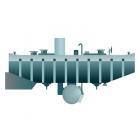We humans depend on the ocean, the performance of its ecosystems, and its biological diversity. When Jacques Piccard started his first deep-sea expedition in 1960, the world’s oceans still seemed healthy and clean. Human impact on the oceans due to industrialization was not yet obvious, and no one realized that it would increase continuously and eventually reach a critical mass. To bring it to a point: The oceans are too acidic, the sea levels too high; they are too warm, too empty and too dirty. Oceans may be vast, but the fishing industry, oil and natural gas production, raw material extraction, shipping, tourism and the military have all put a strain on them. We all take from the ocean but give nothing in return. On the water, we continue to behave as hunters and gatherers, only this time using twenty-first century technology.
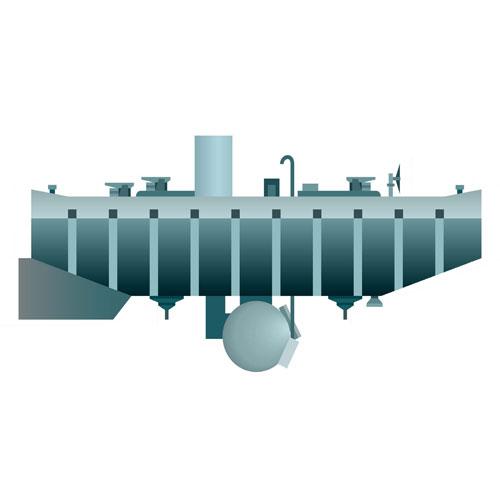
Oceanography - The submarine “Trieste”
Wyn Tiedmers
Oceanography - The submarine “Trieste”
Wyn Tiedmers
Drawn by Wyn Tiedmers , 2014.  This work is licensed under a Creative Commons Attribution-NonCommercial-NoDerivatives 4.0 International License.
This work is licensed under a Creative Commons Attribution-NonCommercial-NoDerivatives 4.0 International License.
Projekt Nekton: Oceanography
Text and images by Wyn Tiedmers
University of the Arts (UdK), Berlin
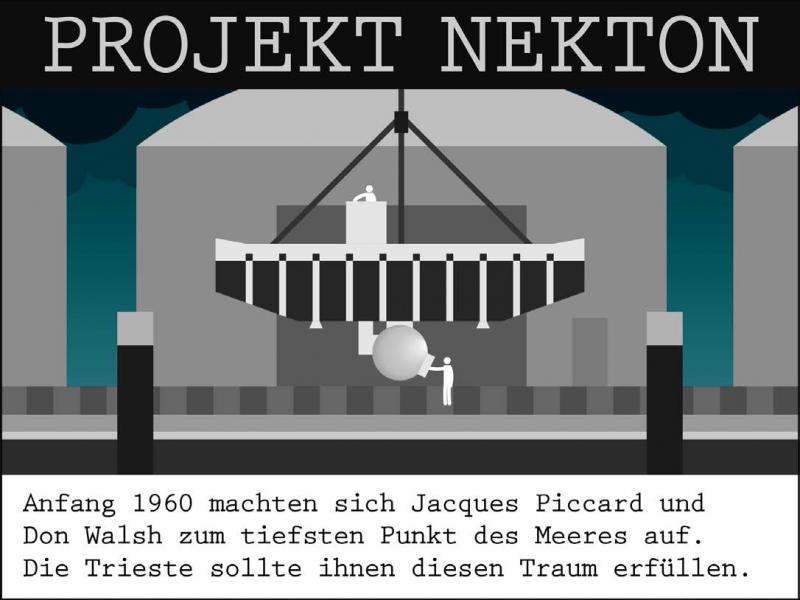
Project Nekton
At the beginning of 1960, Jacques Piccard and John Walsh set out on a journey to the deepest point in the ocean. The Trieste would help make this dream of theirs a reality.
Project Nekton
At the beginning of 1960, Jacques Piccard and John Walsh set out on a journey to the deepest point in the ocean. The Trieste would help make this dream of theirs a reality.
Drawn by Wyn Tiedmers , 2014.  This work is licensed under a Creative Commons Attribution-NonCommercial-NoDerivatives 4.0 International License.
This work is licensed under a Creative Commons Attribution-NonCommercial-NoDerivatives 4.0 International License.
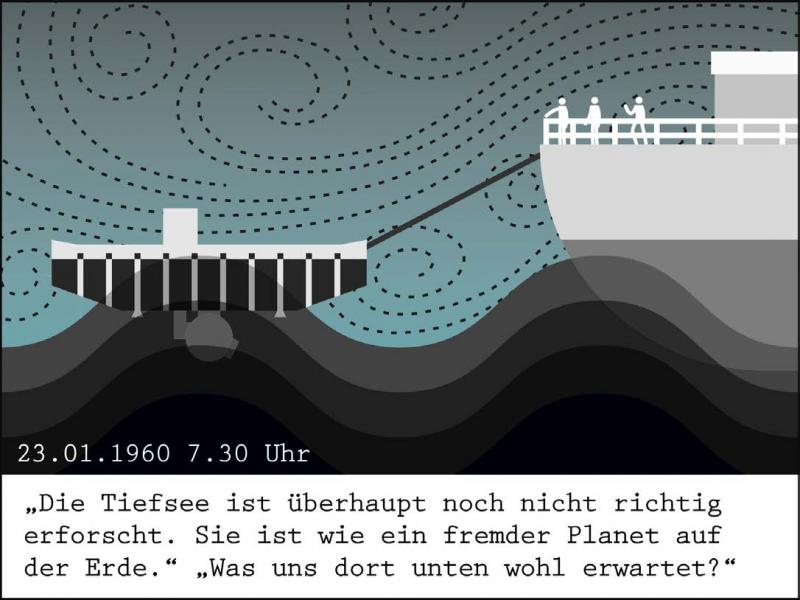
January 23, 1960, 7:30 a.m.
“The deep sea hasn’t been properly explored yet. It’s like another planet, right here on Earth.”
“What awaits us down there?”
January 23, 1960, 7:30 a.m.
“The deep sea hasn’t been properly explored yet. It’s like another planet, right here on Earth.”
“What awaits us down there?”
Drawn by Wyn Tiedmers , 2014.  This work is licensed under a Creative Commons Attribution-NonCommercial-NoDerivatives 4.0 International License.
This work is licensed under a Creative Commons Attribution-NonCommercial-NoDerivatives 4.0 International License.
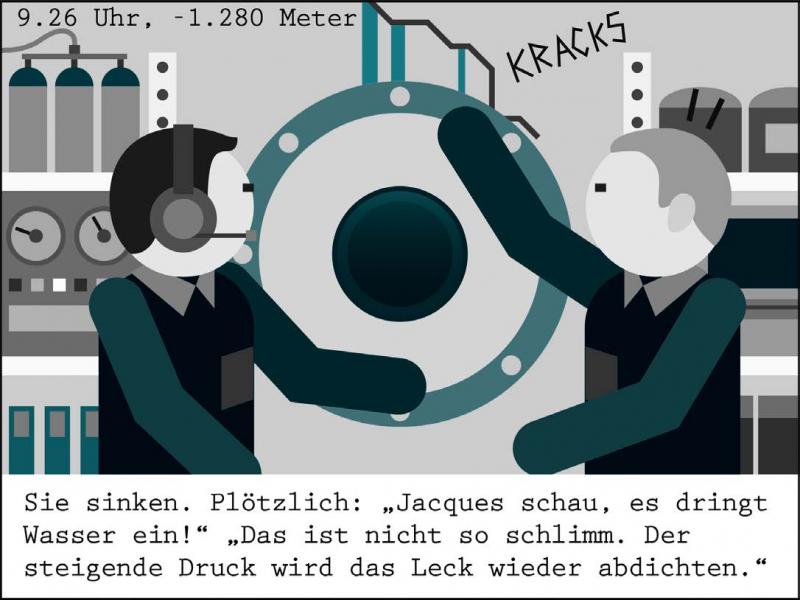
9:26 a.m.,1,260 meters
They go towards the bottom. Suddenly: “Jacques, look, water’s coming in!” “Don’t worry. The increasing pressure will stop the leak.”
9:26 a.m.,1,260 meters
They go towards the bottom. Suddenly: “Jacques, look, water’s coming in!” “Don’t worry. The increasing pressure will stop the leak.”
Drawn by Wyn Tiedmers , 2014.  This work is licensed under a Creative Commons Attribution-NonCommercial-NoDerivatives 4.0 International License.
This work is licensed under a Creative Commons Attribution-NonCommercial-NoDerivatives 4.0 International License.
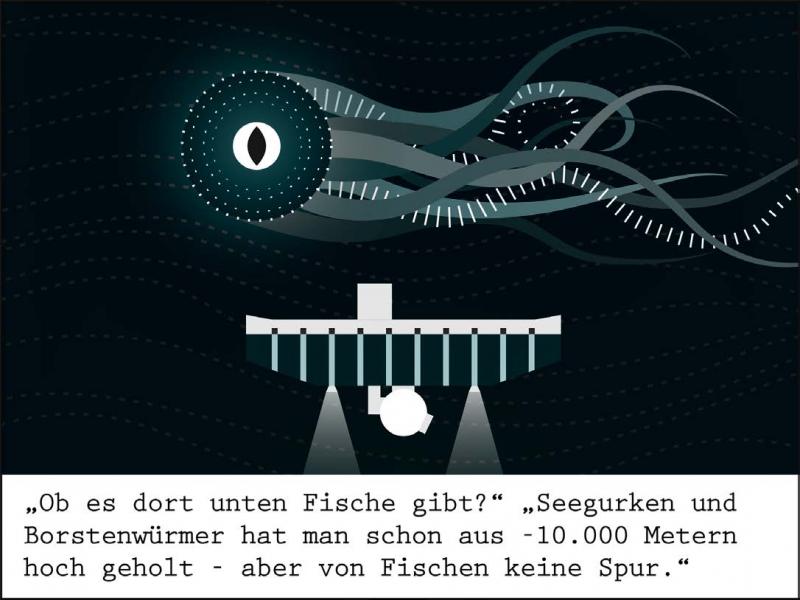
“Are there any fish down there?”
“People have caught sea cucumbers and bristle worms at depths of -10,000 meters—but there’s no trace of fish.”
“Are there any fish down there?”
“People have caught sea cucumbers and bristle worms at depths of -10,000 meters—but there’s no trace of fish.”
Drawn by Wyn Tiedmers , 2014.  This work is licensed under a Creative Commons Attribution-NonCommercial-NoDerivatives 4.0 International License.
This work is licensed under a Creative Commons Attribution-NonCommercial-NoDerivatives 4.0 International License.

“I don’t see anything out there. Except for black. The most beautiful, profound, deep-sea black.”
“No human has ever been here before.”
“I don’t see anything out there. Except for black. The most beautiful, profound, deep-sea black.”
“No human has ever been here before.”
Drawn by Wyn Tiedmers , 2014.  This work is licensed under a Creative Commons Attribution-NonCommercial-NoDerivatives 4.0 International License.
This work is licensed under a Creative Commons Attribution-NonCommercial-NoDerivatives 4.0 International License.
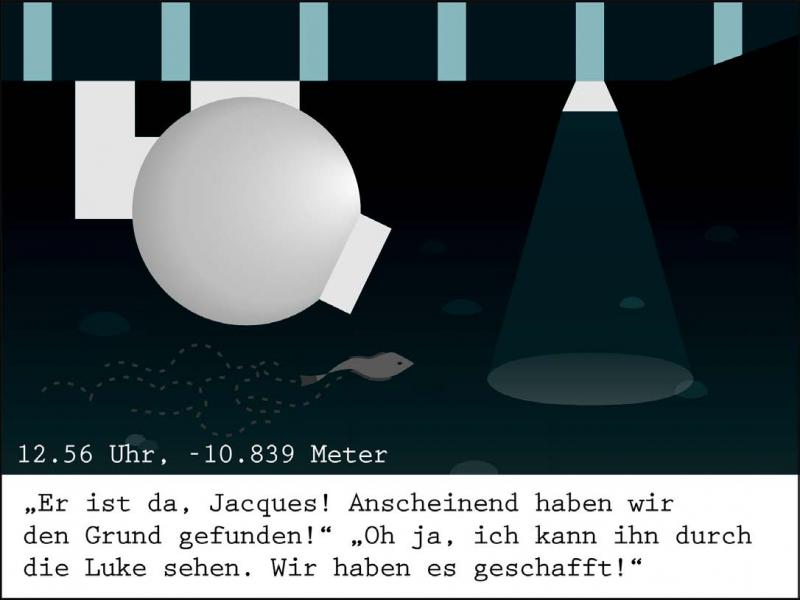
12:56 p.m., -10,839 meters
“There it is, Jacques! It looks like we’ve hit bottom.”
“Oh yes, I can see it through the porthole! We did it!”
12:56 p.m., -10,839 meters
“There it is, Jacques! It looks like we’ve hit bottom.”
“Oh yes, I can see it through the porthole! We did it!”
Drawn by Wyn Tiedmers , 2014.  This work is licensed under a Creative Commons Attribution-NonCommercial-NoDerivatives 4.0 International License.
This work is licensed under a Creative Commons Attribution-NonCommercial-NoDerivatives 4.0 International License.
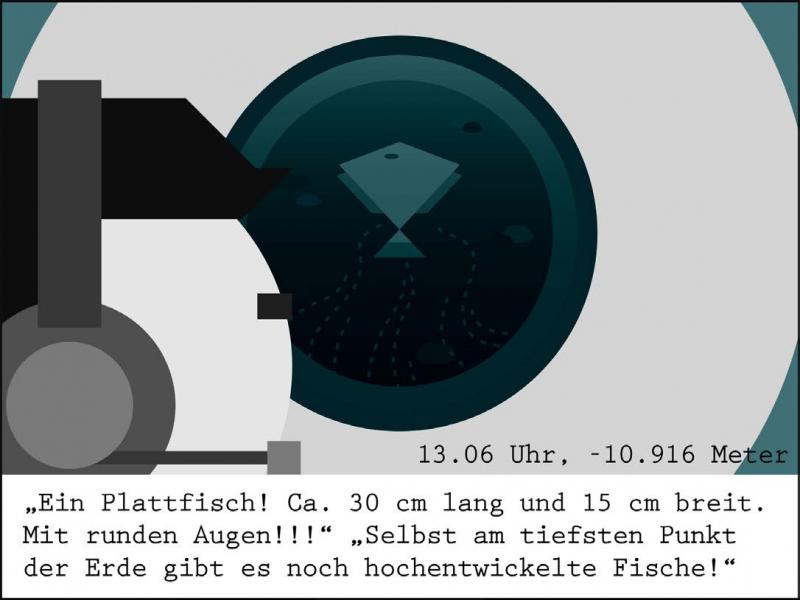
1:06 p.m., -10,916 meters
“A flatfish! About 30 cm long and 15 cm wide. With round eyes!”
“Even at the deepest place on Earth there are highly developed fish!”
1:06 p.m., -10,916 meters
“A flatfish! About 30 cm long and 15 cm wide. With round eyes!”
“Even at the deepest place on Earth there are highly developed fish!”
Drawn by Wyn Tiedmers , 2014.  This work is licensed under a Creative Commons Attribution-NonCommercial-NoDerivatives 4.0 International License.
This work is licensed under a Creative Commons Attribution-NonCommercial-NoDerivatives 4.0 International License.
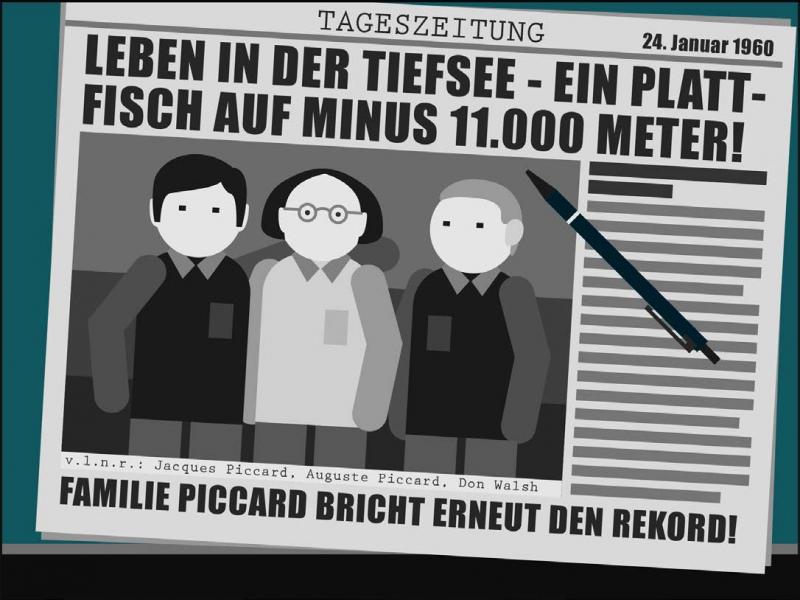
Daily Paper: January 24, 1960
Life in the Deep Sea—A Flatfish at minus 11,000 Meters! The Piccard Family breaks another record!
Daily Paper: January 24, 1960
Life in the Deep Sea—A Flatfish at minus 11,000 Meters! The Piccard Family breaks another record!
Drawn by Wyn Tiedmers , 2014.  This work is licensed under a Creative Commons Attribution-NonCommercial-NoDerivatives 4.0 International License.
This work is licensed under a Creative Commons Attribution-NonCommercial-NoDerivatives 4.0 International License.
Artist’s comments:
Through the examination of the history of the bathysphere and its relevance for the Anthropocene, it became clear that our seas and oceans need to be researched more thoroughly. If we had known more about the oceans, some decisions concerning the protection of the oceans may have turned out differently and we would not have damaged the oceans through overfishing, trash, and other things.
How to cite
Tiedmers, Wyn. “Oceanography.” Environment & Society Portal, Multimedia Library, 2014. http://www.environmentandsociety.org/node/6638/.
The comic also appears in Alexandra Hamann, Reinhold Leinfelder, Helmuth Trischler, and Henning Wagenbreth, eds., Anthropozän – 30 Meilensteine auf dem Weg in ein neues Erdzeitalter. Eine Comic-Anthologie (Munich: Deutsches Museum, 2014).

This work is licensed under a Creative Commons Attribution-NonCommercial-NoDerivatives 4.0 International License.


